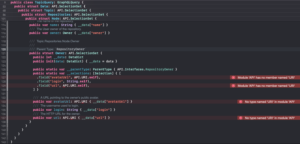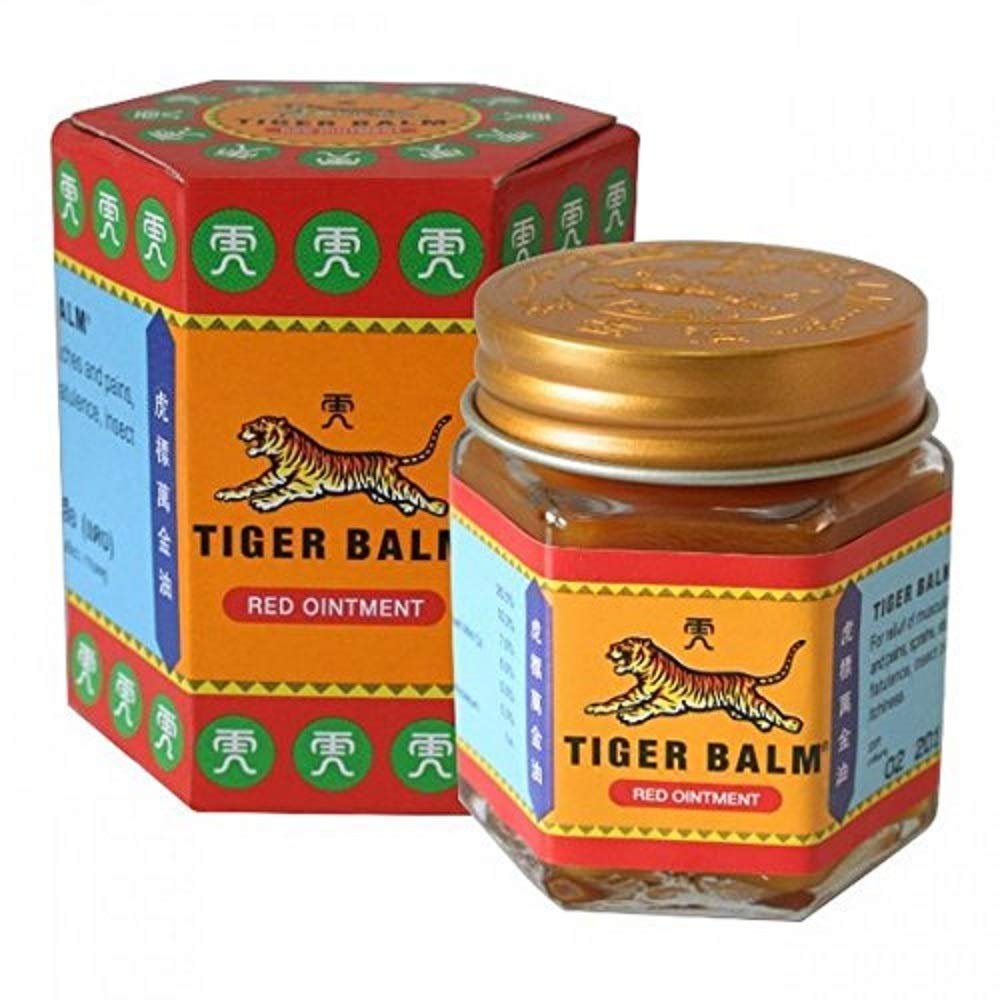When we talk about an “unknown GraphQL query Grapjin,” it might sound like a new and mysterious tool in the world of web development. Grapjin is a new twist on GraphQL, aiming to make querying data even better. If you’ve heard of GraphQL but never tried it, Grapjin might sound like a strange new term. Don’t worry, we’re here to break it all down for you!
In this blog post, we’ll dive into what makes Grapjin different from standard GraphQL. We’ll look at how it works, what makes it special, and how you can use it to improve your data queries. So, get ready to explore this exciting new tool and find out why it’s generating buzz in the tech community.
What is GraphQL? A Simple Explanation
GraphQL is a special way to ask for data from a server. Think of it as a smart request system that lets you get exactly what you want. Unlike traditional methods that might give you too much or too little information, GraphQL helps you get just the right amount.
GraphQL was created by Facebook to make data fetching easier. You ask for specific data, and the server gives you back exactly what you asked for. This is different from other systems that might give you more data than you need or make you ask for it in separate parts.
By using GraphQL, developers can build more efficient applications. They don’t have to deal with extra data or unnecessary steps. It’s a great tool for making web and app development smoother and more precise.
Introducing Grapjin: The New Player in Data Queries
Grapjin is a fresh take on querying data, making it easier and better than ever. If you’ve used GraphQL, you might find Grapjin to be a cool upgrade. It’s designed to improve how we ask for and handle data.
The name “Grapjin” might sound new and mysterious, but it builds on the good parts of GraphQL. It offers new features and ways to make querying data even more effective. Grapjin is like a newer, better version of the GraphQL tool that many developers already love.
With Grapjin, you get more options and tools for handling data. It helps developers build faster and more powerful applications. If you are looking for a way to enhance your data queries, Grapjin might be the tool you need.
Unknown GraphQL Query Grapjin: How Does It Work?
The unknown GraphQL query Grapjin works by offering advanced ways to ask for data. It’s like adding extra tools to your toolbox. While GraphQL lets you get data efficiently, Grapjin takes it a step further.
In simple terms, Grapjin builds on the basics of GraphQL but adds new features. This makes it easier to handle complex queries and get the data you need quickly. If you are familiar with GraphQL, you’ll find Grapjin’s extra tools very useful.
Understanding how Grapjin works involves learning its new features and how they fit with GraphQL. It’s a bit like learning a new game with extra levels. Grapjin makes the process of querying data even better and more flexible.
Key Differences Between GraphQL and Grapjin
When comparing GraphQL and Grapjin, the key differences become clear. GraphQL is already a powerful tool, but Grapjin introduces some new and exciting features. These changes make it stand out.
GraphQL allows you to ask for exactly the data you need, but Grapjin adds extra capabilities. For example, Grapjin might have new ways to filter or sort data more efficiently. These improvements help make your data queries even better.
By using Grapjin, you can get more advanced options and better performance. It’s like upgrading from a regular tool to a high-tech version. If you’re looking for more features and better data handling, Grapjin offers a lot to explore.
How to Write a Basic Grapjin Query
Writing a basic Grapjin query is quite simple once you know the basics. It starts with setting up your request to get specific data. You tell Grapjin what you need, and it will fetch just that.
Just like with GraphQL, you start with a query declaration. Then, you add fields to specify what data you want. Grapjin makes this process easy and clear, helping you get the exact information you need without any fuss.
In a basic Grapjin query, you’ll use a straightforward format to request data. It’s similar to GraphQL but with some added features. Practicing with simple queries helps you get comfortable with Grapjin’s new tools.
Advanced Techniques with Grapjin Queries
Advanced techniques with Grapjin queries involve using its special features to handle more complex data requests. Grapjin offers new ways to filter, sort, and organize data, making your queries more powerful.
With Grapjin, you can create queries that are more flexible and detailed. For example, you might use advanced filtering options to get very specific results. These techniques allow you to work with large and complex datasets more effectively.
Learning these advanced techniques can help you make the most of Grapjin’s capabilities. It’s like discovering hidden features in a tool you already use. By mastering these techniques, you can handle even the toughest data challenges.
Common Uses for Unknown GraphQL Query Grapjin
The unknown GraphQL query Grapjin is useful in many different scenarios. It shines in areas where you need to work with real-time data or handle complex queries. Grapjin helps make these tasks easier and more efficient.
For example, if you’re working on an app that needs to update data in real time, Grapjin can help manage these updates smoothly. It also works well with large datasets, allowing you to query and organize data more effectively.
Grapjin’s features are designed to address common problems with data queries. Whether you’re dealing with real-time updates or complex structures, Grapjin offers tools to handle these situations better.
Troubleshooting Grapjin: What If It Doesn’t Work?
If you run into problems with Grapjin queries, it’s important to troubleshoot effectively. The first step is to check if your query syntax is correct. Mistakes in the query can lead to unexpected results.
Next, make sure your schema matches what you’re trying to query. If the schema is not set up properly, your queries might not work as expected. Reviewing the documentation can help solve many common issues.
If problems persist, consider reaching out for help or consulting community forums. Sometimes, others might have faced similar issues and can offer solutions. Troubleshooting helps ensure you get the best results from Grapjin.

Fixing Performance Issues in Grapjin Queries
Performance issues with Grapjin queries can affect how quickly you get your data. To fix these problems, start by optimizing your queries. Simplifying complex queries can improve speed and efficiency.
Another important step is to ensure proper indexing on the data you’re querying. Good indexing helps the server find and deliver data faster. You might also need to upgrade server resources if performance issues continue.
Regularly reviewing and testing your queries can help catch performance problems early. By addressing these issues, you can keep your data queries running smoothly and efficiently.
Best Practices for Crafting Grapjin Queries
To get the best results from Grapjin queries, following best practices is key. Start by adhering to Grapjin’s syntax guidelines. Using the correct syntax helps ensure your queries work as intended.
Optimizing for performance is also important. Avoiding unnecessary complexity and keeping queries as simple as possible can improve efficiency. Regularly testing your queries helps catch issues before they become problems.
By following these best practices, you can make the most of Grapjin’s features and keep your queries running smoothly. Good practices lead to better results and a more efficient querying process.
Examples of Unknown GraphQL Query Grapjin in Action
Looking at examples of the unknown GraphQL query Grapjin can help you understand how it works. A basic example might involve a simple query to get user information, showing how to request specific fields.
An advanced example could demonstrate more complex querying, like filtering posts by author and retrieving comments. These examples show how Grapjin can handle both simple and detailed data requests effectively.
Seeing Grapjin in action helps illustrate its capabilities and how it improves upon traditional methods. These examples provide a practical view of what Grapjin can do for your data queries.
The Future of Grapjin and GraphQL: What to Expect
The future of Grapjin and GraphQL looks promising as both tools continue to evolve. Grapjin is likely to grow in popularity as more developers discover its benefits. It may introduce even more features and improvements over time.
GraphQL will also keep evolving, with ongoing updates to enhance its functionality. The combination of Grapjin and GraphQL could lead to more powerful and flexible data querying solutions in the future.
Staying updated on new developments and trends will help you make the most of these tools. The future holds exciting possibilities for both Grapjin and GraphQL, offering more options for efficient data management.
Comparing Grapjin with Traditional GraphQL Queries
Comparing Grapjin with traditional GraphQL queries highlights the advancements and unique features of each. While GraphQL provides a solid foundation for querying data, Grapjin introduces enhancements that make querying even more effective.
GraphQL is known for its efficiency in data retrieval, allowing clients to request specific data fields. Grapjin builds on this by offering new syntax and tools for more advanced querying. For instance, Grapjin might streamline complex queries, making them easier to write and manage.
Understanding these differences helps developers choose the right tool for their needs. Grapjin’s additional features can be particularly useful in scenarios where traditional GraphQL might fall short. This comparison helps highlight the strengths of each approach.
Grapjin and Real-Time Data: A Perfect Match
Grapjin excels in handling real-time data updates, making it an ideal choice for applications that need continuous data updates. This feature allows developers to efficiently manage and display live data streams.
Real-time applications, like chat apps or live dashboards, benefit from Grapjin’s advanced querying capabilities. It ensures that data is updated promptly without performance issues. Grapjin’s ability to handle real-time data effectively enhances the user experience.
Using Grapjin for real-time data requires understanding how to set up and manage subscriptions. These subscriptions keep your data in sync with the latest updates, making your applications more dynamic and responsive.

How to Integrate Grapjin with Existing Systems
Integrating Grapjin with existing systems involves combining its features with your current setup. This process might include updating your data schemas and adapting your queries to leverage Grapjin’s new capabilities.
Start by reviewing your existing GraphQL setup to identify areas where Grapjin can add value. You may need to adjust your queries or add new fields to take advantage of Grapjin’s advanced features. Integration often involves some configuration to ensure compatibility.
Successful integration of Grapjin can lead to improved performance and more efficient data handling. By incorporating Grapjin, you enhance your existing system with new tools and features that offer greater flexibility and control.
Grapjin vs. Other Query Languages: A Comparative Look
When comparing Grapjin with other query languages, such as SQL or REST APIs, it’s clear that Grapjin offers distinct advantages. While SQL and REST APIs are widely used, Grapjin brings unique features to the table.
Grapjin and SQL serve different purposes. SQL is great for traditional database queries, but Grapjin provides more flexibility in handling nested and complex queries. Grapjin’s unified approach to querying diverse data sources sets it apart from SQL’s rigid structure.
REST APIs and Grapjin also differ significantly. REST APIs require multiple endpoints for different data types, while Grapjin uses a single query language. This unified approach simplifies data interactions and reduces the complexity of managing multiple endpoints.
Troubleshooting Common Issues with Grapjin Queries
Troubleshooting common issues with Grapjin queries involves identifying and resolving problems that might arise during query execution. Common issues include syntax errors, schema mismatches, and performance problems.
Start by carefully checking your query syntax to ensure it follows Grapjin’s rules. Syntax errors can lead to unexpected results or failures. If you encounter schema mismatches, verify that your data definitions align with your query requirements.
Performance issues can be addressed by optimizing your queries and ensuring proper indexing. Regularly testing and reviewing your queries can help catch problems early and ensure smooth operation.
The Impact of Grapjin on Future Data Querying
The impact of Grapjin on future data querying is significant, as it introduces new possibilities and improvements over traditional methods. Grapjin’s features and enhancements are likely to influence how developers approach data querying.
As Grapjin gains popularity, it could lead to new standards and practices in data querying. Its advanced capabilities may set a new benchmark for how queries are constructed and executed, influencing future tools and technologies.
Staying informed about Grapjin’s developments helps developers leverage its benefits and stay ahead in the evolving landscape of data querying. The future of data querying will likely be shaped by innovations like Grapjin.
Best Practices for Using Grapjin in Your Projects
Best practices for using Grapjin in your projects involve following guidelines that ensure efficient and effective use of the tool. These practices help you get the most out of Grapjin’s features and improve the quality of your queries.
Start by adhering to Grapjin’s syntax and structure guidelines. Proper syntax helps avoid errors and ensures your queries work correctly. Additionally, optimize your queries to enhance performance and reduce unnecessary complexity.
Regularly testing and reviewing your queries is essential for maintaining high performance and accuracy. By following these best practices, you ensure that Grapjin is used effectively in your projects, leading to better results and a more streamlined development process.

Exploring Future Updates for Grapjin and GraphQL
Exploring future updates for Grapjin and GraphQL involves keeping track of new features and improvements that may be introduced. Both tools are likely to evolve, offering new capabilities and enhancements over time.
Future updates for Grapjin could include additional features that further improve query performance and flexibility. Staying informed about these updates helps you take advantage of new tools and techniques as they become available.
GraphQL will also continue to evolve, with updates aimed at addressing emerging needs and challenges. By keeping an eye on these developments, you can ensure that you are using the latest and most effective tools for data querying.
Understanding the Grapjin Syntax: A Beginner’s Guide
Understanding the Grapjin syntax is crucial for beginners who want to master this new querying tool. Grapjin’s syntax builds on the principles of GraphQL but introduces new elements that can enhance your querying experience.
To get started with Grapjin, familiarize yourself with its basic syntax rules. These rules dictate how queries should be structured and what elements are required. Grapjin aims to simplify the process, making it easier for developers to write and understand queries.
Beginners should focus on learning how to write simple queries first. Once comfortable, they can explore more advanced syntax features. This approach helps build a solid foundation for using Grapjin effectively.
Grapjin Query Performance Optimization Tips
Optimizing Grapjin query performance is essential for ensuring fast and efficient data retrieval. Proper optimization can significantly improve the speed and responsiveness of your applications.
Start by analyzing your queries to identify any performance bottlenecks. Look for opportunities to simplify or refactor complex queries. Reducing the complexity of your queries can help improve execution times and reduce server load.
Another tip is to use indexing effectively. Indexing helps speed up data retrieval by organizing data in a way that makes it quicker to access. Regularly reviewing and optimizing your queries can help maintain good performance over time.
Integrating Grapjin with Other Technologies
Integrating Grapjin with other technologies can enhance its functionality and make it a powerful tool in your tech stack. Grapjin’s flexibility allows it to work well with various systems and platforms.
When integrating Grapjin, consider how it fits with your existing technologies. This might involve adapting your data schemas or adjusting your application architecture to accommodate Grapjin’s features.
Successful integration often requires some configuration and testing. Ensuring compatibility with other technologies helps maximize the benefits of using Grapjin and ensures a smooth integration process.
Conclusion:
In conclusion, Grapjin offers exciting new possibilities for querying data. It builds on the strengths of GraphQL while adding new features to make data management even easier. Whether you’re just starting out or have experience with GraphQL, learning about Grapjin can help you handle queries more efficiently and effectively.
As Grapjin continues to evolve, it will likely become an even more valuable tool for developers. Exploring its features and understanding how it fits into your projects can lead to better performance and a smoother user experience. So, give Grapjin a try and see how it can enhance your data querying skills!









